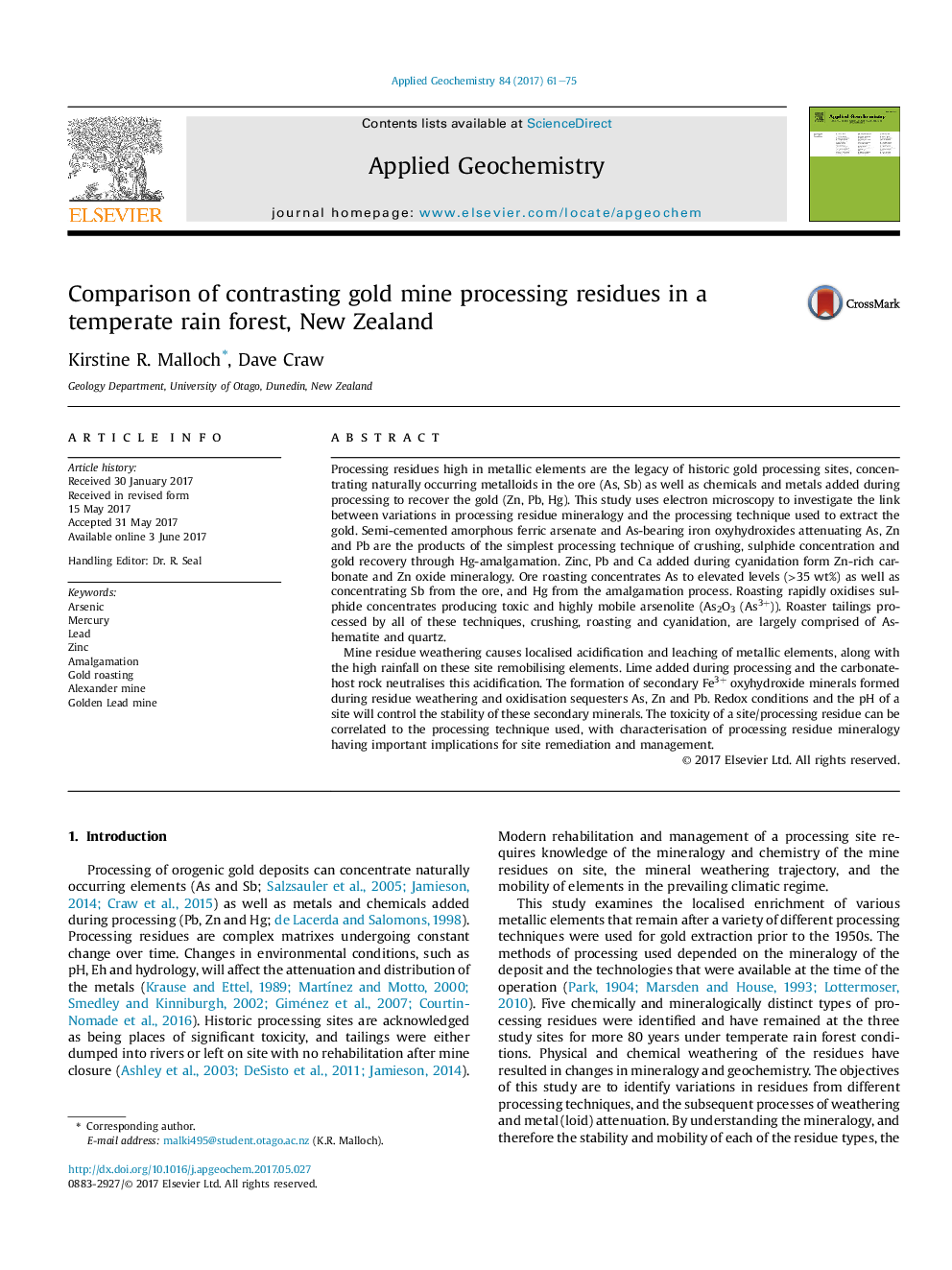| Article ID | Journal | Published Year | Pages | File Type |
|---|---|---|---|---|
| 5752513 | Applied Geochemistry | 2017 | 15 Pages |
Abstract
Mine residue weathering causes localised acidification and leaching of metallic elements, along with the high rainfall on these site remobilising elements. Lime added during processing and the carbonate-host rock neutralises this acidification. The formation of secondary Fe3+ oxyhydroxide minerals formed during residue weathering and oxidisation sequesters As, Zn and Pb. Redox conditions and the pH of a site will control the stability of these secondary minerals. The toxicity of a site/processing residue can be correlated to the processing technique used, with characterisation of processing residue mineralogy having important implications for site remediation and management.
Keywords
Related Topics
Physical Sciences and Engineering
Earth and Planetary Sciences
Geochemistry and Petrology
Authors
Kirstine R. Malloch, Dave Craw,
